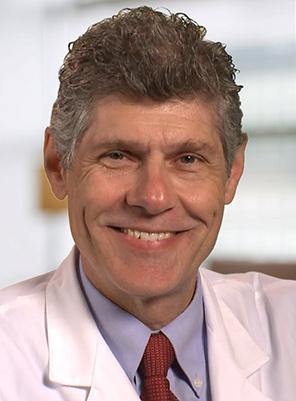
By day, Theodore “Ted” N. Pappas, MD, is vice dean for medical affairs for Duke University’s School of Medicine and distinguished professor of surgical innovation and chief of the Division of Advanced Oncologic and GI Surgery in the Department of Surgery. He specializes in gastrointestinal surgery, peptic ulcer surgery, and cancer of the esophagus, stomach, pancreas and bile duct.
By night – or in his very limited free time – however, Pappas is a surgical historian.
Over the past decade, Pappas, working with teams of colleagues, has combined his two passions—surgery and history—to publish more than ten papers that analyze the underlying medical story behind key historical assassinations, shootings, and other noteworthy events.
“Mostly, I try to tell a story that hasn’t been told yet,” said Pappas. “Commonly, these are public events, and the public story has been told, but the medical narrative has not.”
Pappas’ first historical paper examined President Lyndon B. Johnson’s gallbladder removal surgery, which was fairly standard for the time. He has also written about President William McKinley’s 1901 assassination, and the emergency surgery the president received afterwards.
“He was operated on at a small little clinic at a world’s fair instead of going to the hospital, and the reason was because the sun was setting and they didn’t have electric lights,” said Pappas of McKinley. “You operated during the day at the time, around the turn of the last century. If they took him to the hospital, it would have already been dark. So they had to operate on him while the sun was still shining, and in this case it got so dark they had mirrors set up to guide light into the wound.”
Pappas typically consults primary sources, such as newspapers, autopsy reports, trial testimonies, and police records to re-create the scene and timeline. Most of this information is available via the internet or a library.
“The Duke library is awesome,” said Pappas. “From my desk, I can query pretty much any newspaper on the planet, and it’s surprising the detail you’ll get in the newspaper.”
Pappas also researches which, if any, pertinent doctors are still alive so he can contact them for a first-hand account. He consults with colleagues across Duke’s campus if the subject matter is not his specialty.
Most recently, Pappas analyzed the assassination of Robert F. Kennedy with Duke neurosurgeon Nandan Lad, MD, PhD. The paper is forthcoming in the Journal of Neurosurgery later this month. June 5 marks the 50th anniversary of the shooting of Robert F. Kennedy at the Ambassador Hotel in Los Angeles, on June 5, 1968.
“I had done some research on Robert Kennedy previously a couple of years ago, and I’m always trying to figure out if there’s something interesting to discuss,” said Pappas. “Usually if the medical story hasn’t been told, the answer is yes. I thought I was eventually going to write a paper on Robert Kennedy and then when the 50th anniversary came up, it was time.”
Other co-authors on the paper, all from Duke, include Nandan Lad, MD, PhD, associate professor of neurosurgery, Jordan M. Komisarow, MD, a chief resident in neurological surgery, and Megan Llewellyn, medical illustrator in the department of surgery. Working with the other co-authors, Llewellyn provided drawings of the bullet path. Lad reviewed the neurosurgical aspects of the case and worked with Pappas and Komisarow to analyze Kennedy’s injuries and modern day clinical approaches to these types of injuries.
Komisarow contributed knowledge about the impact of traumatic brain injury on a patient.
“I was delighted to work with Dr. Pappas on the recent article (forthcoming in the Journal of Neurosurgery), because it provided me with the opportunity to analyze the neurosurgical aspects of the senator’s care and to integrate this with research on current management of penetrating brain injury,” said Komisarow. “Together with the rest of the team, I worked to translate the descriptions of the senator’s brain injuries into accurate neuroanatomical pictures. This was quite challenging, since the commonly used imaging techniques were not available at the time of the assassination.”
Pappas is also currently working on a paper about the assassination of Martin Luther King, of which the 50th anniversary was also observed earlier this year, in April. For that paper, Pappas will work with Duke vascular surgeons.
“This is sort of a team effort which is always fun for me,” said Pappas. “I’ve never had anyone say no, and it’s always fun, it’s always interesting.”